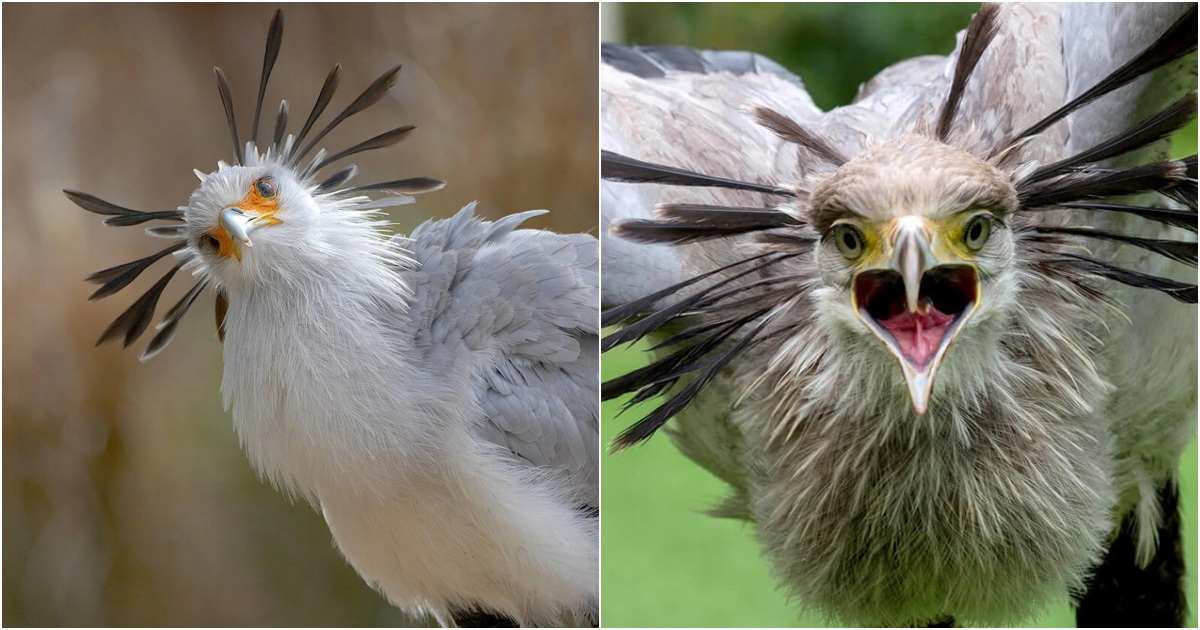Graceful Enigma: The Alluring Secretarybird – A Predator’s Beauty and Elegance





When encountering prey, the Secretarybird utilizes its beak and powerful legs as weapons, engaging in a swift pursuit until its quarry is subdued. Its wings spread, and the tuft of feathers behind its head rises to intimidate its target. Astonishingly, research suggests that this hunting technique has remained virtually unchanged for five million years, a testament to its evolutionary prowess.

The Secretarybird’s legs, exceptionally elongated, house one of the most potent kicks known to the animal kingdom. With a force of approximately 195 Newtons, equivalent to 5 to 6 times its body weight, its strike occurs within the blink of an eye. Beyond its captivating beauty, the Secretarybird exhibits intellect as well. During hunts, it capitalizes on nearby fires, collecting debris to ignite, corralling prey into the path of flames.
Mating among Secretarybirds occurs year-round, contingent on food availability. Courtship, though uncomplicated, is a sight to behold. The male and female engage in playful pursuits across grasslands, extending their wings in a mesmerizing display. Together, they craft their nest – a testament to collaboration and love – using branches, leaves, grass, and animal fur, reaching heights of 2.4 meters and enduring for years. Unlike many predators, Secretarybird parents are devoted caretakers, imparting essential life skills to their offspring. Over 12 weeks, the young birds develop into self-reliant individuals, equipped to thrive independently.

The Secretarybird’s uniqueness is acknowledged in national symbols and military insignia. It graces the flags of Sudan, symbolizing victory, and adorns South Africa’s military emblem as a protector. Since 1968, it has received protection through the African Convention on the Conservation of Nature and Natural Resources, igniting conservation efforts to preserve its significance.
In the delicate balance of elegance and predation, the Secretarybird stands as an enigmatic marvel – an embodiment of nature’s harmonious contradictions and the wondrous tapestry of life.



